So you're finally ready to get your very first dog. Congratulations on making this decision! You're in for several years of love and fun! Caring for a canine companion is one of the most enjoyable life experiences you can have. Nothing beats the bond between a dog and a loving owner.
Chances are, you've put a lot of thought into this decision and feel like you're ready for the responsibility that comes with having a dog. But have you put any thought into the type of dog you want to adopt?
If you're like most first-time dog owners, you've probably been dreaming about this moment for years and have a vision in your head about the look, breed, and personality of your future furry pal. But before you get ahead of yourself,
You need to think long and hard about what breed is right for you.
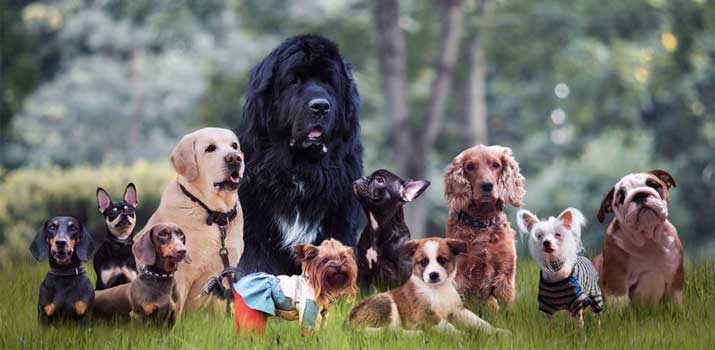
There are countless dog breeds looking for their forever home. That said, some breeds are better suited for new dog owners than others. Caring for a dog is a big commitment. One of the biggest mistakes you can make is choosing a breed that you can't handle
To help you avoid the pitfalls of new dog ownership, here's a list of some of the best and worst dogs for first-time owners.
10 of the Best Dog Breeds to Own as a First Time Owner
So what exactly makes a "good" dog? For beginners, we focused on friendly breeds that are eager to please. The following breeds are all quite trainable. They are all good with families and make great first-time pups for newcomers.
1. Golden Retriever
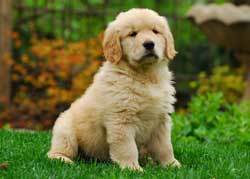
One of the most popular dog breeds in the world, Golden Retrievers are a go-to for new dog owners. They are a medium to large dog breed. They are known for their playful attitude and family-oriented nature.
Highly trainable, Golden Retrievers are quite intelligent and can pick up commands very easily. Goldies are also personable and can get along with just about anyone.
Appearance: Goldies may have long or short coats. They do shed, but the fallout is manageable with regular brushing. Adults are 21 to 24 inches tall and 55 to 75 pounds.
Personality: Fun and personable. These dogs are loyal and have an ever-present smile.
Energy Levels: Golden Retrievers are active. They require regular walks and intense play.
Life Expectancy: 10 to 12 years
2. Labrador
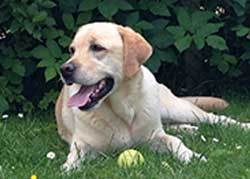
Labrador Retrievers are another recognizable breed with a penchant for learning. They are quite intelligent and need regular stimulation to stay happy. Otherwise, they can act destructively.
Luckily, the Lab is easy to please. These dogs are loyal and love to be around family.
Appearance: Medium-large dogs. They have short coats. But, they can shed a lot. Average adult sizes vary from 21 to 25 inches tall and 55 to 80 pounds.
Personality: These dogs are always down to play. They also love to learn. However, when bored, they can act out.
Energy Levels: Active but not overwhelming. They do fine with regular walks and intense play.
Life Expectancy: 10 to 12 years
3. Poodle

Whether you choose a Standard, Miniature, or Toy Poodle, these dogs are great for first-timers. They are playful and pick up commands well.
This breed is also good for allergy sufferers. They have thick curly fur, which doesn't shed or release as much dander as standard fur.
Appearance: The average adult height is 18 to 24 inches for Standard Poodles. Weight is between 45 and 70 pounds. Poodles also come in Miniature and Toy Variations. They have thick curly hair that does shed. But, it does require grooming.
Personality: Intelligent and easy to train. Poodles have lovable personalities and can adapt to a wide range of households.
Energy Levels: Moderately active. They need regular exercise to stave off boredom and destructive behavior.
Life Expectancy: 12 to 15 years
4. Yorkshire Terrier
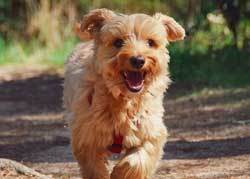
Yorkshire Terriers are very loyal to owners. They can be trickier to train, as they can have a mischievous streak. However, their desire to please is ideal for training.
With proper training and some ground rules, they can become well-behaved members of the family.
Appearance: Small dogs reaching heights of only 8 to 9 inches. The average weight is 7 pounds. They have an ever-growing coat of long hair, which requires grooming.
Personality: Loyal and affectionate. These dogs love to sit on your lap. They can be protective and wary of strangers.
Energy Levels: Moderately active. Yorkshire Terriers need plenty of exercise to stay healthy. But, they are keen on relaxing as well.
Life Expectancy: 13 to 16 years
5. Bichon Frise
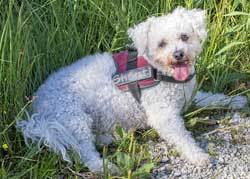
These balls of fluff are highly adaptable and easy to train. They are great for owners of all ages. Bichon Frise dogs are intensely loyal and quite attentive.
Eager to please, they learn fast. Plus, these dogs can thrive in just about any environment. Whether you live in a small apartment or have acres of land, they are happy either way.
Appearance: The average adult height is 9.5 to 11.5 inches. The average weight is 12 to 18 pounds. These dogs have thick coats of curly hair that require grooming. But, they don't shed as much as other breeds.
Personality: Happy-go-lucky and attentive. They are easy to train and do well with kids.
Energy Levels: Moderately active. A couple of long walks is enough to tire them out.
Life Expectancy: 12 to 15 years
6. Pug
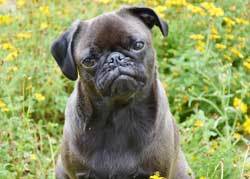
With their squished faces and adorable smiles, Pugs are very popular for first-time owners. They are happy-go-lucky dogs that don't mind lounging around the home. Daily walks and light play is always welcome.
The only downside of the Pug is its potential health problems! Thanks to their unique anatomy, you should avoid intense activity.
Appearance: Pugs are 12 to 13 inches tall and weigh between 14 and 18 pounds. They have short fur that is easy to maintain. Pugs also have distinct faces.
Personality: Friendly and calm. Pugs are open and friendly to most people.
Energy Levels: Low to medium. Too much exercise could be detrimental due to their breathing difficulties.
Life Expectancy: 12 to 15 years
7. King Charles Spaniel
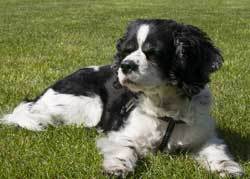
The King Charles Spaniel is a breed that looks perpetually youthful. With its floppy ears and short snouts, these adorable dogs are beautiful.
They are also affectionate and very gentle. King Charles Spaniels need basic training to thrive, which they can pick up very easily with positive reinforcement.
Appearance: A small breed, King Charles Spaniels measure 10 to 13 inches tall and weigh 13 to 18 pounds. They have medium-length coats that require regular brushing to avoid mats and tangles.
Personality: Cheerful and Sweet. King Charles Spaniels are usually docile and quiet. They are easy to train as well.
Energy Levels: Moderately active. These dogs adapt well to most lifestyles.
Life Expectancy: 9 to 14 years
8. Boxer
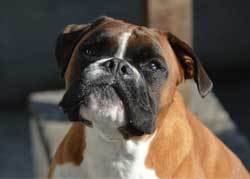
Boxers are medium-large dogs with a lot to offer in the personality department. Despite their intimidating look, these dogs are very playful and want nothing more than to show affection.
They are great with families and will naturally protect your domain. But, they are not unreasonably suspicious of strangers.
Appearance: Boxers stand tall at 21 to 25 inches. On average, most weigh 55 to 76 pounds. They have a short, low-maintenance coat of slick fur.
Personality: Loyal and good with families. Boxers can be a bit stubborn. But, they are attentive and will pick up commands with regular training.
Energy Levels: Highly active. These dogs do best with families that run and play frequently.
Life Expectancy: 10 to 12 years
9. Papillon
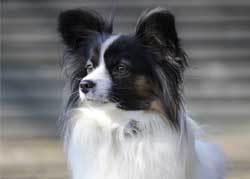
Papillons are inquisitive and intelligent dogs. They are quite active and need constant stimulation to stave off destructive behavior. However, these dogs can easily entertain themselves with the right toys around them.
This breed is friendly and gets along well with most people. They're great for families. Though, kids need to be gentle with their tiny frame.
Appearance: Papillons are a small dog breed with average heights of 8 to 11 inches. Most weigh 7 to 9 pounds. They have a long fluffy coat that needs moderate grooming. The coat only sheds minimally.
Personality: Intelligent and friendly. Despite their size, Papillons are highly trainable. They're also friendly and playful.
Energy Levels: Highly active. They require regular exercise and play. But, they can also relax in your lap
Life Expectancy: 13 to 15 years
10. Greyhound

While they have a history of racing, Greyhounds make great family pets, too. They are active dogs when the opportunity presents itself. But, they can also lounge around and stay calm.
These dogs do have a strong prey drive, so they are not good around cats or other small pets.
Appearance: Adult Greyhounds are 27 to 30 inches tall and weigh 60 to 70 pounds. They have a lean build and a short coat. These need very little grooming outside of baths.
Personality: Well-behaved and calm. While they enjoy an adventure, Greyhounds are usually quiet and relaxed at home.
Energy Levels: Moderately active. They need the opportunity to run around an enclosed yard to stay healthy.
Life Expectancy: 13 to 15 years
10 of the Worst Dog Breeds to Own as a First Time Owner
Now that you know which dog breeds are good for beginners, let's talk about some not-so-great option. One important note: The following breeds are not bad by any means. They can make wonderful companions! But, they are a bit harder to raise. As a newbie, they can be too much to handle.
Generally, you want to avoid any dog that is difficult to train. Breeds with a rebellious streak or those that like to think independently are not good choices for beginners.
Here are some breeds you should avoid as a new dog owner.
1. Siberian Husky
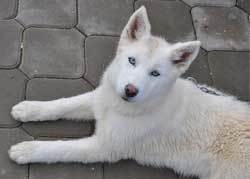
Siberian Huskies are a favorite on the Internet. But, they can be a handful. Known for their aloof attitudes, Huskies don't need your approval to be happy. They are independent and often require repeated calls to listen to commands.
These dogs are also high-maintenance. That beautiful thick coat requires a lot of care to look good!
Appearance: As medium-sized dogs, Huskies are usually 20 to 24 inches tall and weigh 35 to 60 pounds. They have a thick double-coat, which sheds immensely.
Personality: Intelligent, but strong-willed. Siberian Huskies are independent thinkers. They require constant training throughout their life.
Energy Levels: Highly active. These dogs were bred to pull sleds! Thus, they require tons of exercise.
Life Expectancy: 12 to 15 years
2. Shiba Inu
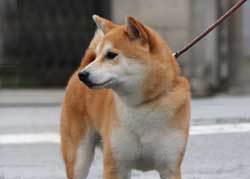
Here's another beloved dog that's full of personality. They can be a joy to own. However, they are also notoriously difficult to train.
Shibu Inus are fiercely independent. Without proper training, they can get into a lot of trouble. Many Shibu Inus are also prone to aggression without proper socialization.
Appearance: Adults are usually 13 to 17 inches tall and weigh 15 to 24 pounds. Shibu Inus have short but thick coats. They require a moderate amount of grooming.
Personality: Independent and difficult to train. These dogs don't like to listen!
Energy Levels: Moderately active. They require regular walks on a leash.
Life Expectancy: 12 to 15 years
3. German Shepherd
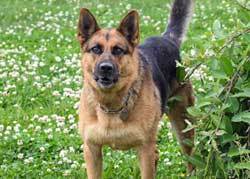
German Shepherds are an iconic working dog! Often seen next to police officers and military personnel, these pups can be trained to do just about anything.
That said, their intelligence can be a real problem. You have to implement constant training to stay one step ahead of them. Otherwise, they will walk all over you.
Appearance: A medium-large breed, German Shepherds are 22 to 26 inches tall. They weigh 49 to 88 pounds. They have a thick double-coat of fur that requires a lot of maintenance.
Personality: Independent to a fault. German Shepherds need constant mental stimulation.
Energy Levels: Moderately active. German Shepherds are working dogs. They need a lot of exercise.
Life Expectancy: 9 to 13 years
4. Dalmatian
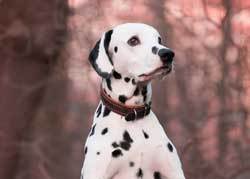
Don't let the Dalmatian's appearance in cartoons fool you. These are tough dogs to care for even for seasoned dog owners. The biggest issue is their energy levels.
These dogs are best for highly active individuals. If they don't get enough exercise, Dalmatians will turn to destructive behavior.
Appearance: Dalmations are medium-large dogs that weigh 45 to 70 pounds. Adults are typically 19 to 24 inches tall. They have short spotted coats, which can shed a lot.
Personality: Playful and smart. They aren't too difficult to train. But, Dalmatians are prone to jealousy and aggression.
Energy Levels: Highly active. Dalmations need intense exercise regularly. If they don't get it, they can turn aggressive or destructive.
Life Expectancy: 10 to 13 years
5. Rottweiler

Rottweilers get a bit of a bad rep. When you see aggressive Rotties, it's usually because they aren't raised right! These dogs can be vicious in the wrong hands.
They are intelligent and hard-working. But, they require constant training and socialization to become the lovable goofs you hear about.
Appearance: The average adult height is 22 to 27 inches. The average weight is 77 to 130 pounds. They have a short coat of fur that does shed frequently.
Personality: Affectionate yet guarded. Rottweilers can be loving to family members. But, they require proper socialization. Otherwise, they can be aggressive.
Energy Levels: Highly active. Rotties need a couple of intense workouts every day to stay healthy and well-mannered.
Life Expectancy: 8 to 10 years
6. Border Collie
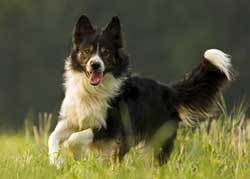
Border Collies are workaholics that do best on large farms. Originally bred for herding, they need to stay active all day long. They are also very intelligent and like to be challenged.
These aren't dogs you can leave alone while you're out. When bored, they can bark, dig, and even nip.
Appearance: Border Collies are medium-sized dogs weighing between 27 and 45 pounds. Adults are usually 18 to 22 inches tall. They can have long or short coats. Both will shed and require regular grooming.
Personality: Very intelligent. Border Collies are one of the smartest around. So much so that they can develop behavioral issues without regular stimulation.
Energy Levels: Extremely active. These dogs need a lot of physical and mental exercise.
Life Expectancy: 10 to 17 years
7. Akita

Akitas have a long history of hunting. As a result, they are very suspicious of people and animals they don't know. Despite their cute looks, these dogs can get aggressive very quickly.
Strong training techniques are a must, which can be too much for new owners.
Appearance: A large breed, Akitas are 24 to 28 inches tall and tip the scales at 70 to 130 pounds. They have long, thick coats that need daily brushings and the occasional grooming.
Personality: Intelligent and suspicious. Akitas are smart. But, they can get aggressive with strangers.
Energy Levels: Moderately active. Regular exercise is a must, but they won't wear you out.
Life Expectancy: 10 to 15 years
8. Wiemaraner
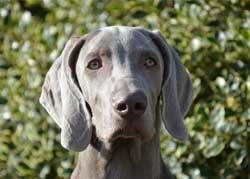
The Weimaraner is a beautiful and loyal dog. In the right hands, they can thrive. The dogs are quite smart and naturally athletic.
But, they do come with some problems. These dogs are highly active and always want to play. When you're unable to pay attention to them, they can develop anxiety and become destructive as well.
Appearance: Adult Weimaraners are roughly 23 to 26 inches tall and weigh 55 to 88 pounds. They have lean and athletic bodies covered in short gray fur. The coat is low-maintenance.
Personality: ILoyal but anxious. Weimaraners are prone to separation anxiety. They can also be difficult to housebreak.
Energy Levels: Highly active. These dogs have a seemingly endless supply of energy.
Life Expectancy: 11 to 14 years
9. Cane Corso
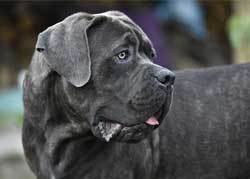
Cane Corsos are the ultimate guard dog. While this may be good for seasoned owners, it can be too much for newbies. This breed is very protective and can spot intruders long before you do.
They act aggressively to almost everyone. As a result, they aren't good for those who have people over all the time.
Appearance: A large breed, Cane Corsos are 24 to 28 inches tall and weigh over 100 pounds. The coat is short, smooth, and low-maintenance.
Personality: IFiercely protective. They are loyal to owners and no one else.
Energy Levels: Moderately active. Cane Corsos are strong, but they're big runners.
Life Expectancy: 11 to 14 years
10. Bullmastiff
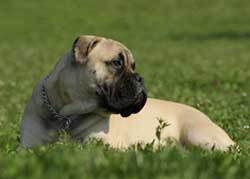
The Bullmastiff is a beast of a dog that can quickly overpower owners. While they are loyal, these dogs require firm training. Otherwise, they can become aggressive.
They can be somewhat independent and have a strong prey drive. Bullmastiffs need an experienced trainer to help them reach their full potential.
Appearance: Large and domineering, Bullmastiffs are 25 to 27 inches tall and 100 to 130 pounds. Their muscular bodies are covered in short fur, which is relatively low-maintenance.
Personality: IDocile but strong. These dogs can be quite peaceful. But, they require proper training and socialization to get there.
Energy Levels: Not very active. All they need are a couple of walks a day.
Life Expectancy: 8 to 11 years
The Importance of Choosing the Right Breed
The breed of your new dog isn't the only factor to consider. But, it's one of the biggest!
Currently, there are 195 registered pedigrees with the American Kennel Club. On top of that, there are countless mixed-breed pups and designer dogs! Every single one of those breeds has its own unique personalities and needs.
You see, every breed in existence originated with certain goals in mind. Most started as working dogs that were bred to herd animals, protect livestock, or pull sleds. Others were bred purely for their beauty.
Of course, these days most dogs are nothing more than another member of the family. But, those instincts still exist. As a result, you're going to encounter dogs that react differently to certain environments.
A breed's ancestry determines its physical needs, trainability, and pretty much everything about its personality.
As an owner, it's your responsibility to give your new dog the best life possible. That doesn't just mean providing food, shelter, and companionship.
You also have to train them, provide opportunities for socialization, provide grooming, promote exercise, and so much more! A breed's physical characteristics and personality will play a role in all of that.
You're going to be spending a lot of time with your dog over the next 15 years or so. Thus, you must get a dog that you can reasonably manage. It takes a lot more than love to raise a dog.
The last thing you want to do is get in over your head with a "difficult" dog you can't handle.
Unfortunately, we see this all the time. Thousands of dogs are dropped off at shelters because new owners weren't ready for the responsibility. In a vast majority of those cases, it's because the owner did not choose the right breed.
Do your research! Spend some time gathering as much information about the breeds you're interested in as possible. This is your first time caring for a canine, so there's a lot to learn!
Consider your lifestyle and think about how a dog fits into the equation. Then, find a breed that works for you.
Things to Conisder When Choosing a Dog Breed
Several factors will impact the needs of your dog and your experience raising it. All pups are different. But generally, dogs from a specific breed will carry the same traits. Here are some of the most important things to keep in mind when you're trying to choose a breed that will fit into your life.
Temperament
This is a big one! An even-tempered dog is best for first-time owners.
Make no mistake, all dogs will show you a lot of love! But, it's others that you have to worry about. More aggressive breeds can be a risk. You have to know how to train and control them in unfamiliar situations. Otherwise, they could attack people or other animals.
Plus, you need to think about your own family! Dogs can bond with kids, family friends, and anyone else they encounter regularly. However, they will also be loyal to you!
If this is your first time owning a dog, it's best to avoid any breed that's considered a "guard" or "attack" dog.
Mental Prowess
Canines are cunning creatures. But, some breeds are better at picking up cues and commands than others. Ultimately, mental prowess comes down to trainability.
Again, without any past experience training dogs, there's going to be some trial and error involved with your new pup. You need a dog that's going to learn fast!
Exercise Requirements
Are you someone who likes to go on long hikes or jogs? Or, do you prefer to relax at home? Whatever the case may be, find a dog that matches your lifestyle!
All dogs are going to need some exercise every day. But less-active breeds can get by with a couple of 20-minute walks or an intense play session. Working dogs, however, will need some intense physical training to stay happy and healthy.
Exercise is more important for dogs than people think. Highly active pups will have a hard time adjusting to a more sedentary life. They could turn to aggression or bad behavior if you're not meeting their exact needs.
Size
We all have our preferences when it comes to size classifications. Some of us prefer pint-sized pooches that can go anywhere. Others like big beasts that are down for wrestling!
As a first-time owner, we don't recommend getting an excessively large breed. Bigger dogs can be a handful. They eat more, have stricter exercise requirements, and can be difficult to train if you don't have the space.
Speaking of which, keep your home in mind! Most large dogs aren't going to want to stay cooped up in a tiny apartment all day long.
Grooming Needs
Regular grooming is paramount for any dog. That said, some breeds will need more intense grooming than others.
We're talking about long-haired dogs here. While beautiful, these pups can shed like crazy! Not only that, but you also have to pay for hair cuts and work hard to prevent hair matting. So you have the time to deal with all of that extra grooming work?
Health Risks
Last, but not least, you need to think about potential health risks. Now, there's no way to guarantee that a dog will be completely healthy throughout their life. Any dog can encounter health problems.
But, you can use a breed's genetic information to get a better idea of what to expect. Many breeds are genetically predisposed to suffer from things like cancer, hip dysplasia, and a host of other ailments.
You can do your part to decrease the risks of your dog suffering from health problems. However, you also have to be prepared to deal with them if they occur. Regular vet visits and proper healthcare is a must!
What About Mixed Breeds?
You don't have to go with a pure breed for your first dog. There are many mixed-breed pups in shelters waiting to find a permanent home! Popular designer dogs are quite popular, too.
In many cases, mixed-breed dogs are a great option for first-time owners. But, there's always some uncertainty involved.
Mixed-breed dogs harbor traits from both parents. That applies to both physical and mental traits. So, you never know what you're going to get. You can do some research about parent breeds to get a good idea of what to expect.
However, you never know what you're going to get with a mixed-breed. So, you have to be prepared for anything.
Conclusion
Don't rely on social media and funny dog videos to decide on the breed of your future dog. This is a big decision that you shouldn't take lightly! Do your research to learn more about the breeds you're interested in. Then, weigh your options and make a choice that's right for your lifestyle.
Check out some of the breeds on our list! You may find your future furry friend!
The final tip we can give you: meet potential dogs and find one that you connect with! While breed information is quite reliable, all pups are different! There are plenty of dogs out there that break the mold.
You're choosing a companion that will be with you through thick and thin. When you find that perfect match, you'll know!
Also Read:
What Info to Put on a Dog’Tag to increase the odds of a safe return

